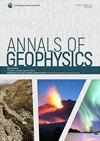意大利地震危险性评估综述
IF 1.2
4区 地球科学
Q3 GEOCHEMISTRY & GEOPHYSICS
引用次数: 1
摘要
我们提出了一项评估地震灾害在意大利,特别提到了灾害模型和建筑规范之间的关系。在19世纪的早期危险评估尝试之后,1908年12月28日,墨西拿海峡地震促使了第一个国家地震立法的开始,于1909年初通过。然而,直到1980年之后,官方建筑规范才开始基于真正的科学背景,当时灾难性的伊尔皮尼亚(意大利南部)地震迫使有资格的当局接受基于科学的评估(地震目录数据统计),以支持新的国家地震带的实施。后来,在1985年至2000年间,地震灾害评估的两个基本组成部分,即地震记录和震源分布,通过Gruppo Nazionale Difesa dai Terremoti和instituto Nazionale di geofinica进行的调查得到了极大的发展。随着基础数据的改进,意大利地震学界开始基于地震构造概率的概念开发一种新的灾害模型(PS4),旨在为意大利政府提供一个可靠的参考框架,以更新地震区划和建筑规范。然而,这一目标仅在二十年后就实现了:2002年10月31日,意大利南部一所倒塌的学校发生中等规模地震,造成27名儿童和一名教师死亡,迫使有资格的当局在22年内第二次采取重大的现代化步骤。整个意大利领土,包括罕见和稀疏地震活动的地区,被细分为四个地震带,主要是基于PS4的结果。2004年,意大利地震学界开发了MPS04,这是一个完全更新的危险模型,最初只是考虑到更新地震区划。2007年,MPS04被扩展到为新的建筑规范提供设计谱,该规范最终于2009年在灾难性的拉奎拉(意大利中部)地震之后被采用。2013年完成的欧洲地震风险评估项目SHARE的经验代表了向前迈出的一步,并为一个名为MPS19的新项目奠定了基础,该项目专门为更新意大利建筑规范提供了坚实的基础。本文章由计算机程序翻译,如有差异,请以英文原文为准。
The assessment of earthquake hazard in Italy: a review
We present a review of the assessment of earthquake hazard in Italy, with special reference to the relationships between hazard models and building codes. After early attempts at hazard assessment in the 19th century, the 28 December 1908, Messina Straits earthquake prompted the inception of the first national seismic legislation, passed in early 1909. Nevertheless, the official building code started to be based on a truly scientific background only after 1980, when the catastrophic Irpinia (southern Italy) earthquake forced the qualified authority to accept a science-based assessment (statistics on the earthquake catalogue data) to support the implementation of the new national seismic zonation. Later on, between 1985 and 2000, the two basic components of seismic hazard assessment, namely the earthquake record and the distribution of earthquake sources, were greatly developed through investigations carried out by the Gruppo Nazionale Difesa dai Terremoti and by the Istituto Nazionale di Geofisica. Along with the improvement of basic data, the Italian seismological community started developing a new hazard model (PS4), based on the concept of seismotectonic probabilism, aimed at supplying the Italian Government with a solid reference frame for updating the seismic zonation and building code. Nevertheless, this goal was achieved only two decades later: on 31 October 2002 a moderate-size earthquake caused the death of 27 children and a teacher in a collapsed school of southern Italy, forcing the qualified authority to take a major step of modernization for the second time in 22 years. The entire Italian territory, including areas of rare and sparse seismicity, was subdivided into four seismic zones, mainly on the basis of PS4 results. In 2004, the Italian seismological community developed MPS04, a fully updated hazard model that was initially conceived only in view of updating the seismic zonation. In 2007, MPS04 was extended to provide design spectra for a new building code, which was finally adopted in 2009, following the disastrous L’Aquila (central Italy) earthquake. The experience of the European project for seismic hazard assessment named SHARE, completed in 2013, represented a step forward and put the basis for a new project, termed MPS19, designed specifically to provide a sound basis for updating the Italian building code.
求助全文
通过发布文献求助,成功后即可免费获取论文全文。
去求助
来源期刊

Annals of Geophysics
地学-地球化学与地球物理
CiteScore
2.40
自引率
0.00%
发文量
38
审稿时长
4-8 weeks
期刊介绍:
Annals of Geophysics is an international, peer-reviewed, open-access, online journal. Annals of Geophysics welcomes contributions on primary research on Seismology, Geodesy, Volcanology, Physics and Chemistry of the Earth, Oceanography and Climatology, Geomagnetism and Paleomagnetism, Geodynamics and Tectonophysics, Physics and Chemistry of the Atmosphere.
It provides:
-Open-access, freely accessible online (authors retain copyright)
-Fast publication times
-Peer review by expert, practicing researchers
-Free of charge publication
-Post-publication tools to indicate quality and impact
-Worldwide media coverage.
Annals of Geophysics is published by Istituto Nazionale di Geofisica e Vulcanologia (INGV), nonprofit public research institution.
 求助内容:
求助内容: 应助结果提醒方式:
应助结果提醒方式:


